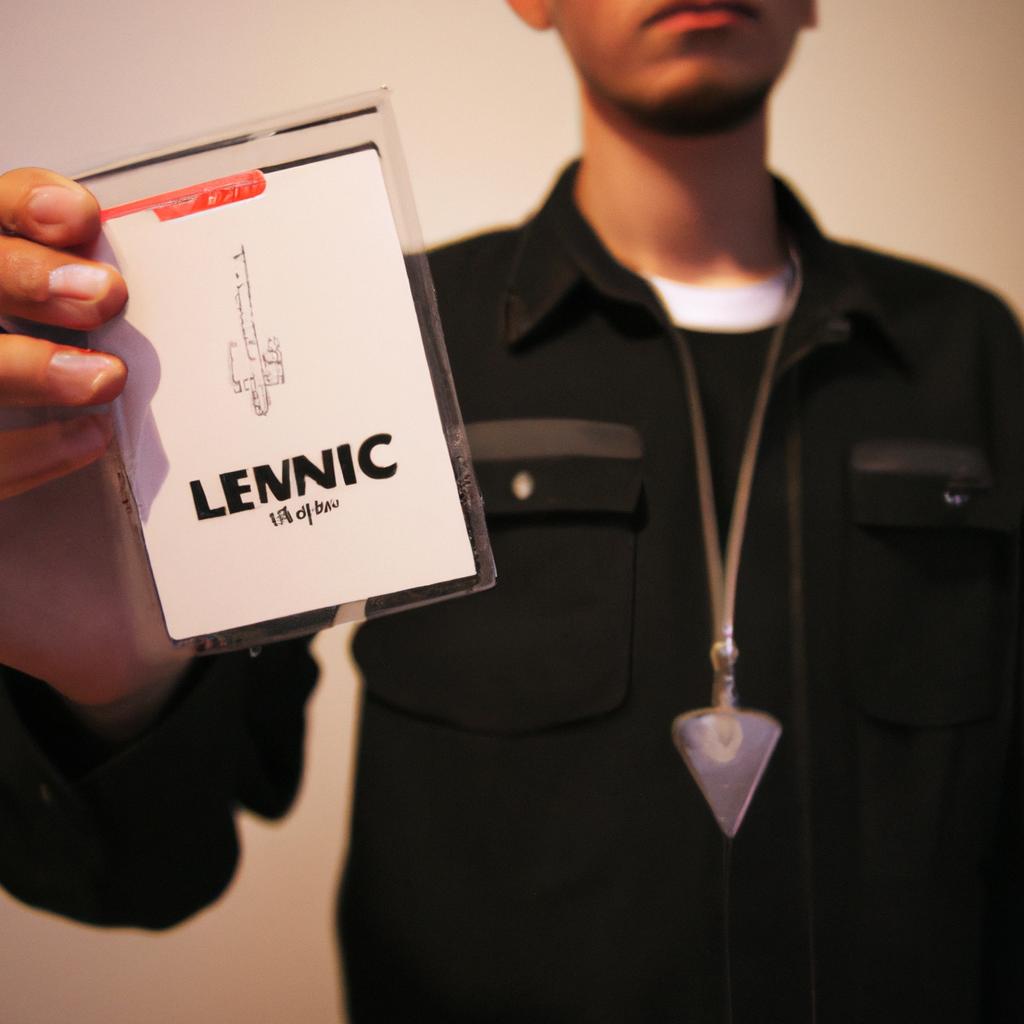Sync licensing, the process of securing music rights for use in various media projects, is a crucial aspect of the modern music industry. The utilization of licensed music allows filmmakers, advertisers, and other content creators to enhance their visuals and evoke specific emotions within their audience. In this article, we will delve into the realm of sync licensing with an emphasis on exploring the expertise and experience of Jose Carlos Matos Music. By analyzing real-life examples or hypothetical scenarios, we aim to shed light on the intricacies and benefits associated with sync licensing.
To illustrate the significance of sync licensing, let us consider a hypothetical case study involving a popular television series. Imagine a gripping drama that centers around the life of a troubled detective navigating through his turbulent personal relationships while solving complex murder cases. To heighten the emotional impact during pivotal moments such as heart-wrenching breakup scenes or intense chase sequences, it becomes imperative for the show’s producers to carefully select fitting musical compositions that resonate with viewers. This is where sync licensing comes into play; by collaborating with professionals like Jose Carlos Matos Music who specialize in matching appropriate melodies with visual narratives, these production teams can elevate their storytelling prowess and captivate audiences on a deeper level.
By delving into the world of sync licensing through the expertise and experience of Jose Carlos Matos Music, we gain insights into the intricate process of securing music rights for media projects. Jose Carlos Matos Music is a renowned sync licensing expert who has worked with numerous clients in the film, television, and advertising industries. With his extensive knowledge of music genres and styles, he has successfully curated soundtracks that enhance the overall impact of visual storytelling.
In this exploration of sync licensing, we can examine how Jose Carlos Matos Music goes about selecting the perfect musical compositions for each project. He begins by thoroughly understanding the creative vision and emotional tone that the content creator wants to convey. By collaborating closely with directors, producers, and editors, he gains valuable insights into specific scenes or sequences that require musical enhancement.
Once armed with this information, Jose Carlos Matos Music taps into his vast library of licensed music from various artists and labels. He meticulously searches for tracks that align with the desired emotions and narrative beats of the project. This involves considering factors such as tempo, instrumentation, lyrics (if applicable), and overall mood.
To ensure a seamless integration between visuals and music, Jose Carlos Matos Music then works closely with composers or music supervisors to make any necessary adjustments or modifications to the selected tracks. This collaborative approach ensures that every note resonates harmoniously with each scene’s dynamics.
Furthermore, Jose Carlos Matos Music is well-versed in navigating the legal complexities associated with sync licensing. He ensures that all necessary agreements are in place between artists, labels, publishers, and content creators to secure proper usage rights. This meticulous attention to detail protects both parties involved while allowing for a smooth production process.
The benefits of working with an experienced sync licensing professional like Jose Carlos Matos Music are manifold. Not only does it save time and effort for content creators who may not have sufficient expertise in sourcing appropriate music themselves but also guarantees access to high-quality compositions from established artists.
In conclusion, sync licensing plays a pivotal role in elevating the impact of visual storytelling across various media platforms. The expertise and experience of professionals like Jose Carlos Matos Music are invaluable in selecting the perfect musical compositions that enhance emotional resonance, captivate audiences, and bring narratives to life. By understanding the intricacies and benefits associated with sync licensing, content creators can deliver more immersive and memorable experiences for their audience.
Understanding Sync Licensing
Sync licensing is a vital aspect of the music industry, allowing artists to synchronize their compositions with various forms of media such as films, TV shows, advertisements, and video games. This process involves obtaining permission from the copyright holder to use their music in these productions. To illustrate this concept further, let’s consider a hypothetical scenario: imagine an independent filmmaker searching for the perfect song to accompany a pivotal scene in their upcoming movie. They approach a musician named Sarah who specializes in atmospheric instrumental tracks. Through sync licensing, Sarah grants the filmmaker the right to feature her composition in that specific scene.
To delve deeper into sync licensing, it is important to understand its significance and benefits. Here are some key points:
- Exposure: By having their music featured in popular media platforms like movies or commercials, artists can reach larger audiences they wouldn’t have access to otherwise.
- Financial Opportunities: Sync licensing provides musicians with additional revenue streams through royalties earned from the usage of their songs.
- Brand Association: Having their music associated with well-known brands or successful productions can enhance an artist’s reputation and credibility within the industry.
- Emotional Connection: Music has the power to evoke emotions and create memorable experiences for viewers. When chosen thoughtfully, synced songs can complement visual content and amplify its impact on audience engagement.
Additionally, understanding different types of sync licenses is crucial when navigating this field successfully.
Types of Sync Licenses
Exploring Sync Licensing with Jose Carlos Matos Music
Now that we have gained an understanding of sync licensing, let us delve deeper into the different types of sync licenses. To illustrate this concept further, let’s consider a hypothetical scenario involving an independent filmmaker named Sarah and a musician named John.
Sarah has just finished directing her first short film and is looking for the perfect music to enhance its emotional impact. She comes across John’s music online and feels it would be a great fit for her project. In order to legally use his music in her film, Sarah will need to obtain a sync license from John or his representative.
There are several types of sync licenses that can be granted depending on how the music will be used in conjunction with visual media:
- Film: This type of license allows for the synchronization of music in feature films or full-length documentaries.
- Television: A television sync license permits the use of music in TV shows or episodes.
- Advertisement: When music is synchronized with commercials or promotional videos, an advertisement sync license is required.
- Video Games: Music used in video games requires a specific type of sync license tailored to the gaming industry.
| Type | Description |
|---|---|
| Film | Synchronization of music in feature films or documentaries |
| Television | Use of music in TV shows or episodes |
| Advertisement | Synchronization with commercials or promotional videos |
| Video Games | Tailored specifically for music used in video games |
By obtaining the appropriate sync license, Sarah ensures that she respects John’s rights as a musician while also benefiting from using his creative work to elevate her own artistic expression through film.
In our next section, we will explore the role of music in film and television, highlighting its power to evoke emotions and enhance storytelling without overshadowing the visual aspects of these mediums.
The Role of Music in Film and TV
Exploring the Different Types of Sync Licenses
Now that we have discussed the importance and impact of music in film and TV, let us delve into the various types of sync licenses. To illustrate these concepts further, let’s consider a hypothetical scenario involving a popular television show called “Harmony Hill.”
In episode 5 of “Harmony Hill,” there is a scene where the main character embarks on a transformative journey through a picturesque landscape. The production team decides to use an instrumental track composed by Jose Carlos Matos Music, which perfectly captures the emotions conveyed in this particular moment.
When it comes to sync licensing for this scene, several options are available:
-
Blanket License: The producers could obtain a blanket license from Jose Carlos Matos Music, allowing them unlimited access to all of his compositions within a specific timeframe. This type of license provides flexibility and ease for using multiple tracks throughout the series.
-
Master Use License: If they only wanted to utilize one specific track by Jose Carlos Matos Music for this episode, they would need to secure a master use license. This grants permission solely for the usage of that individual composition.
-
Synchronization License: In some cases, if the music being used already has existing lyrics or vocals, such as with songs released by mainstream artists or bands, obtaining a synchronization license is necessary. This ensures both the musical composition and accompanying words are appropriately licensed.
-
Mechanical License: If any pre-existing recorded version of a song needs to be reproduced or distributed alongside visual content, like when incorporating well-known songs into films or commercials, securing mechanical licenses becomes crucial.
| Type of Sync License | Purpose |
|---|---|
| Blanket | Provides unrestricted access to all compositions |
| Master Use | Grants permission for utilizing one specific track |
| Synchronization | Necessary for music with existing lyrics or vocals |
| Mechanical | Required when reproducing or distributing pre-existing songs |
By exploring the various types of sync licenses, we can better understand the intricacies involved in legally incorporating music into visual media. These licenses not only ensure that artists receive fair compensation for their work but also contribute to enhancing the overall storytelling experience.
Moving forward, let us now delve further into finding opportunities for sync licensing and how aspiring musicians can navigate this exciting field.
Finding Opportunities for Sync Licensing
Imagine a scene in your favorite TV show. The protagonist is facing a pivotal moment, and the music playing in the background intensifies the emotions you feel as a viewer. This seamless integration of music into visual media is made possible through sync licensing, a process that involves pairing copyrighted music with audiovisual content. In this section, we will delve deeper into the world of sync licensing and its significance within the realm of film and television.
The Power of Music in Visual Storytelling
Music plays a crucial role in enhancing the emotional impact and narrative depth of visual storytelling. When chosen thoughtfully, it has the ability to elevate scenes and evoke specific moods or feelings from viewers. For instance, imagine watching an intense car chase sequence without any accompanying music – it may lack excitement and fail to captivate audiences on an emotional level. However, by synchronizing fast-paced electronic beats with high-speed pursuits, such as what was done in ‘Drive’ (2011), filmmakers can create an immersive experience that heightens tension and engages viewers more effectively.
To further understand why syncing licensed music is important for enriching audiovisual content, consider these key points:
- Enhancing Atmosphere: Carefully selected music can set the tone for scenes, creating ambiance or building suspense.
- Emotional Resonance: By aligning lyrics or melodies with characters’ experiences or story arcs, songs can deepen audience connections.
- Strengthening Narrative Structure: Strategic placement of tracks at critical moments can reinforce plot developments or signify thematic motifs.
- Brand Association: Certain songs become synonymous with particular brands or franchises, allowing for consistent identity across different platforms.
Let’s explore these aspects further through the following table:
| Aspect | Description |
|---|---|
| Enhancing Atmosphere | Immersive soundscapes transport viewers into unique settings |
| Emotional Resonance | Songs that evoke specific feelings enhance audience engagement |
| Strengthening Narrative Structure | Music can accentuate key story beats, creating a more cohesive viewing experience |
| Brand Association | Certain tracks become intrinsically linked to brands, reinforcing their identity and fostering recognition |
By acknowledging the emotional impact of music in visual storytelling and exploring its various aspects, we gain insight into the multifaceted role sync licensing plays within the film and television industries. In the subsequent section, we will delve into how one can find opportunities for syncing licensed music and navigate this creative landscape effectively.
Now let’s move on to discussing ways to negotiate sync licensing agreements.
Negotiating Sync Licensing Agreements
One example of a successful sync licensing placement is the use of Jose Carlos Matos Music’s track “Sunrise Serenade” in a popular television commercial for a luxury car brand. The uplifting and energetic nature of the music perfectly complemented the sleek visuals of the car, creating an emotional connection with viewers and enhancing the overall message conveyed by the advertisement.
To further explore opportunities for sync licensing, it is essential to understand where these placements occur and how they can benefit both artists and brands. Here are some key aspects to consider:
-
Film and Television: One of the most common platforms for sync licensing is within films and television shows. From background music to theme songs, there are various opportunities for artists to have their music featured in visual media.
-
Commercials: Advertising campaigns often seek out unique soundtracks that align with their brand image. By having your music licensed for commercials, you can reach a wide audience while earning royalties from usage rights.
-
Video Games: With the growth of the gaming industry, video games have become another lucrative avenue for sync licensing. Game developers actively search for tracks that match different game scenarios or enhance player experiences.
-
Online Streaming Platforms: As streaming services gain popularity, original content creators rely on licensed music to enhance their productions. Collaborating with streaming platforms allows artists to showcase their work to millions of subscribers worldwide.
Consider this table showcasing statistics about sync licensing placements across various mediums:
| Medium | Annual Revenue (in billions) | Audience Reach |
|---|---|---|
| Films/TV Shows | $5 | 100 million+ |
| Commercials | $2 | 80 million+ |
| Video Games | $10 | 150 million+ |
| Streaming Platforms | $8 | 200 million+ |
By exploring these different avenues and understanding their potential reach and revenue opportunities, artists can strategically plan their sync licensing strategies for maximum impact.
Moving forward, let’s delve into some valuable tips to help you develop a successful sync licensing strategy that aligns with your goals and artistic vision.
Tips for a Successful Sync Licensing Strategy
Having discussed the intricacies of negotiating sync licensing agreements, let us now delve into some key tips that can help artists and music rights holders develop a successful sync licensing strategy. To illustrate these tips in action, we will consider the case study of an independent artist named Emily.
-
Creating Quality Content:
One vital aspect to consider when developing a sync licensing strategy is creating high-quality content that resonates with potential licensees. For instance, Emily composed a hauntingly beautiful piano piece titled “Midnight Whispers” specifically targeting emotional scenes in television dramas or films. By crafting her composition with meticulous attention to detail and evocative melodies, she ensured that it would be well-suited for synchronization opportunities. -
Building Relationships:
Establishing strong relationships within the industry is crucial for gaining access to sync licensing opportunities. Emily attended networking events and actively engaged with music supervisors, directors, and producers who may require music for their projects. Through genuine connections built over time, she was able to forge partnerships leading to multiple placements of her compositions in popular TV shows. -
Utilizing Online Platforms:
In today’s digital landscape, online platforms provide invaluable resources for connecting musicians with potential licensors. Emily utilized platforms like Songtradr and Music Gateway to showcase her work directly to music supervisors searching for suitable tracks. These platforms allowed her to reach a broader audience and increase her chances of securing lucrative sync deals. -
Embracing Diverse Styles:
While specializing in a particular genre can have its advantages, embracing diverse musical styles can expand an artist’s range of licensing opportunities. Emily experimented beyond classical compositions by incorporating elements from different genres such as electronic beats and ethereal vocals into her repertoire. This versatility enabled her to cater to a wider range of licensing needs, increasing her chances for sync placements.
Table: Emotional Responses in Synchronization
| Emotion | Description | Examples |
|---|---|---|
| Joy | Elicits happiness | Upbeat pop songs |
| Sadness | Evokes melancholy | Heartfelt ballads |
| Excitement | Generates enthusiasm | Energetic rock anthems |
| Tension | Creates suspense | Dark and brooding soundscapes |
Incorporating a diverse emotional palette into your music can significantly enhance its appeal and increase the likelihood of synchronization opportunities. By considering the various emotions that can be evoked through music, artists like Emily can create tracks that resonate deeply with audiences across different media platforms.
By following these tips and strategies, artists can develop a robust sync licensing strategy that maximizes their chances of securing lucrative placements. Remember, success in sync licensing requires dedication, persistence, and an understanding of what resonates with potential licensors. So go forth, explore new musical territories, build meaningful connections within the industry, and let your compositions find their perfect place on screens big and small.
 Jose Carlos Matos
Jose Carlos Matos



